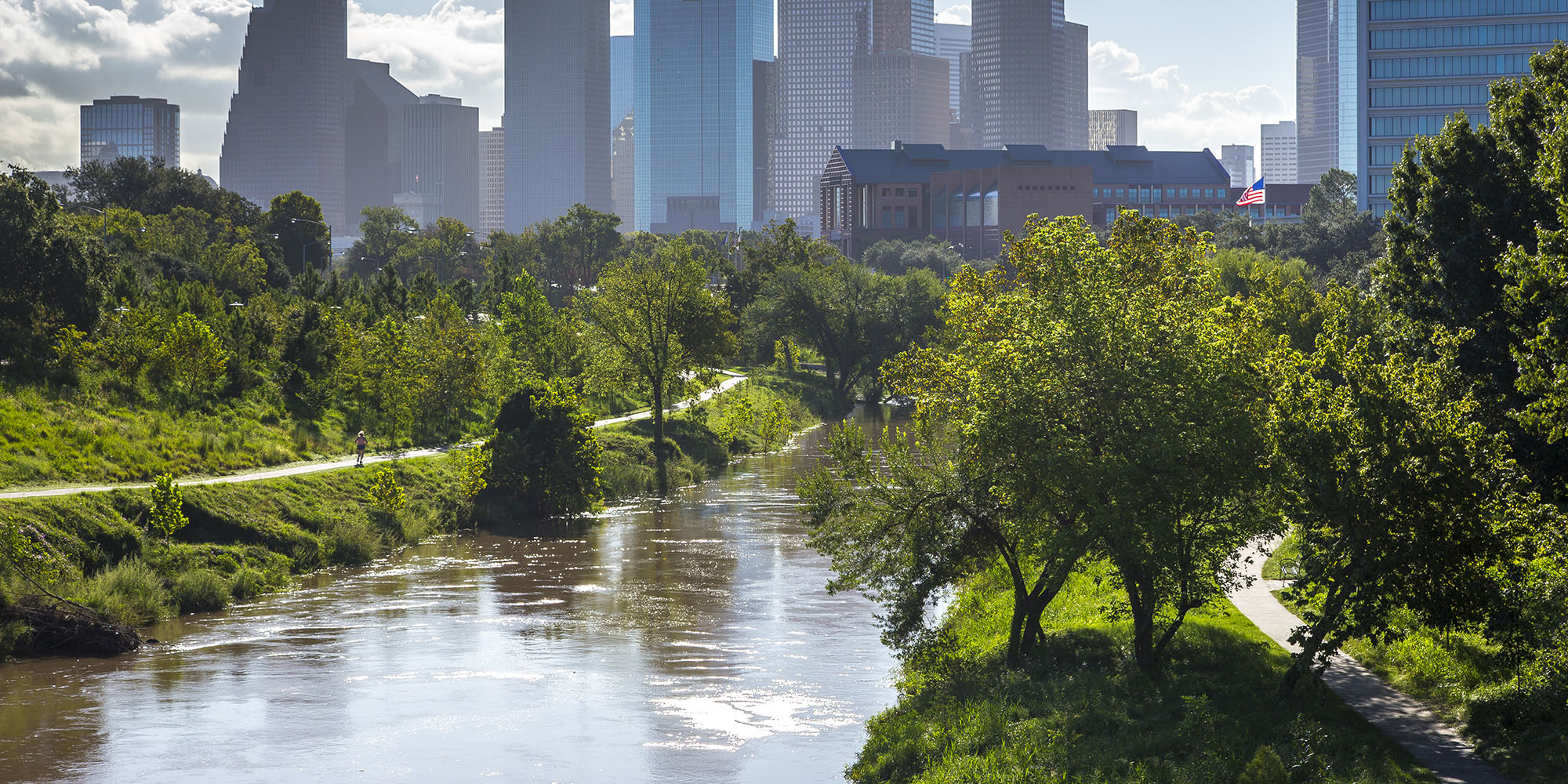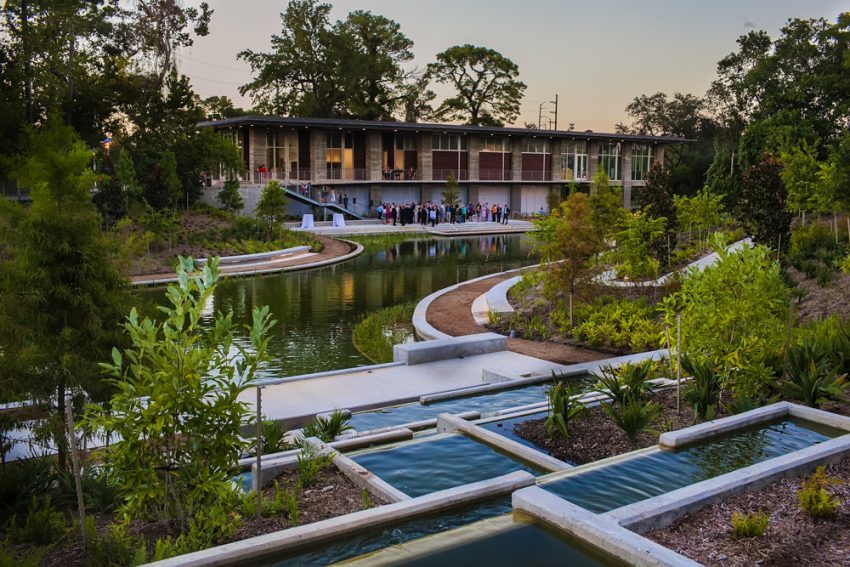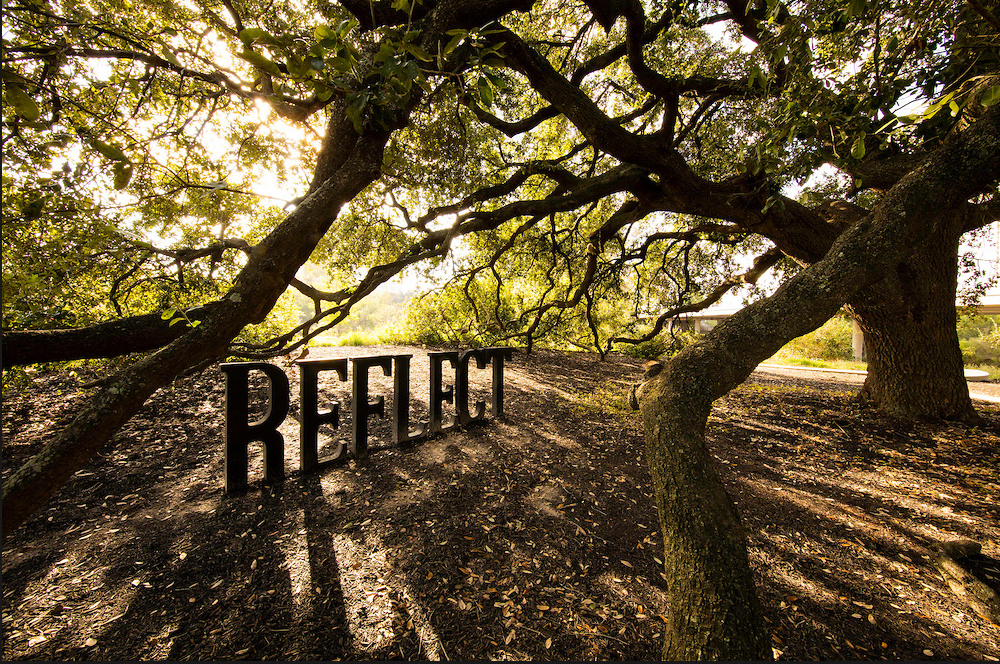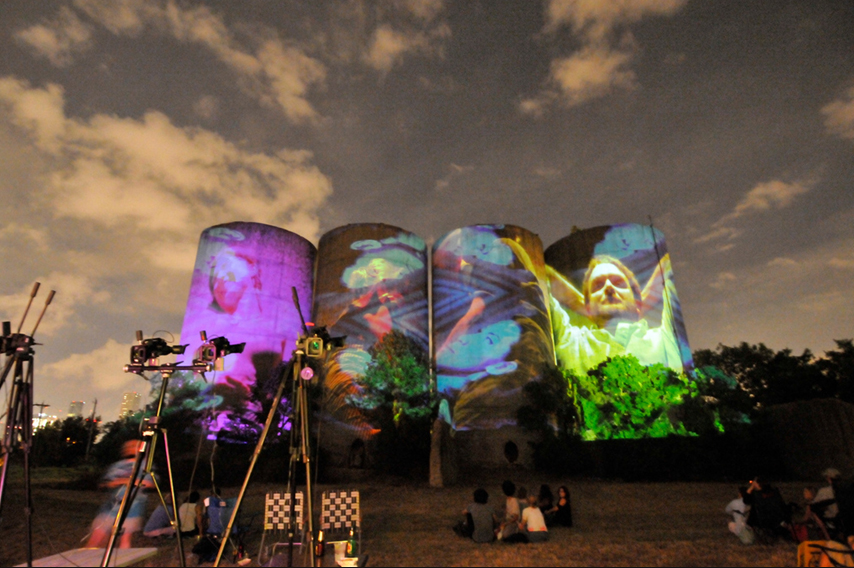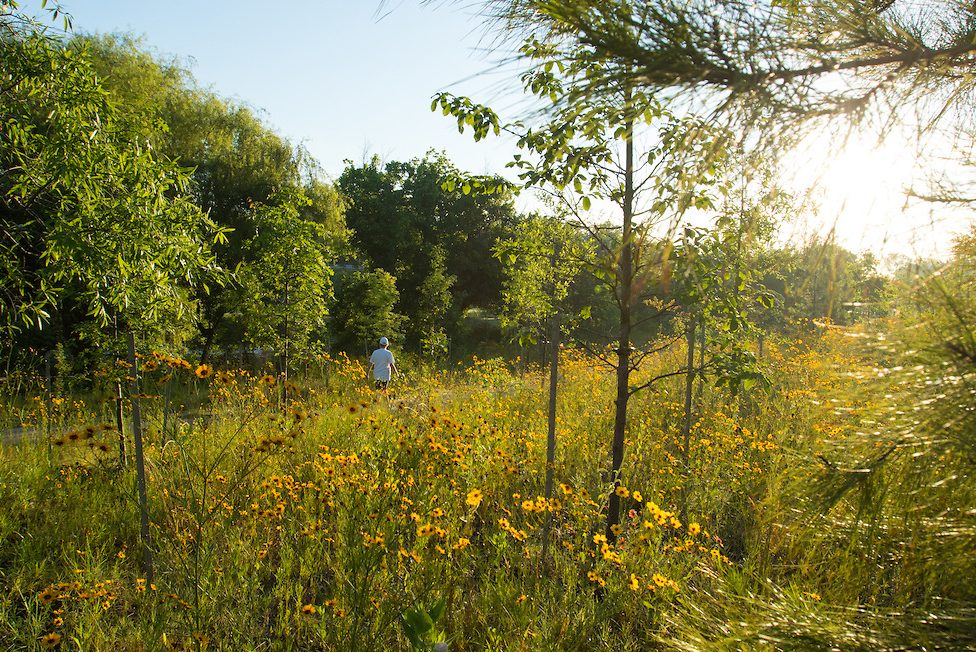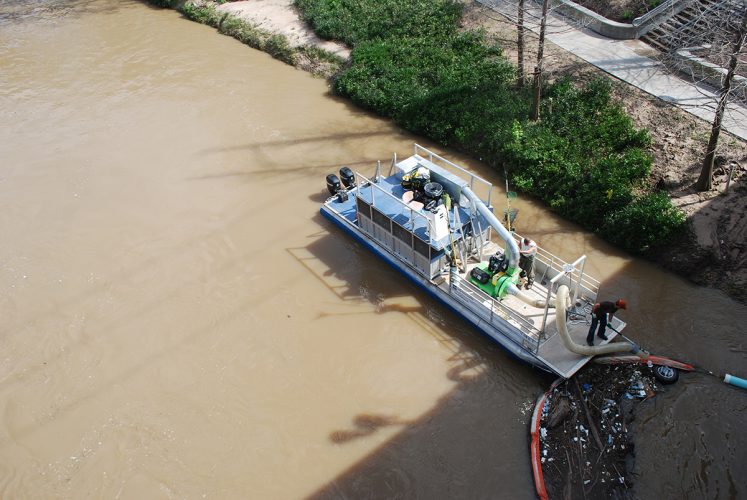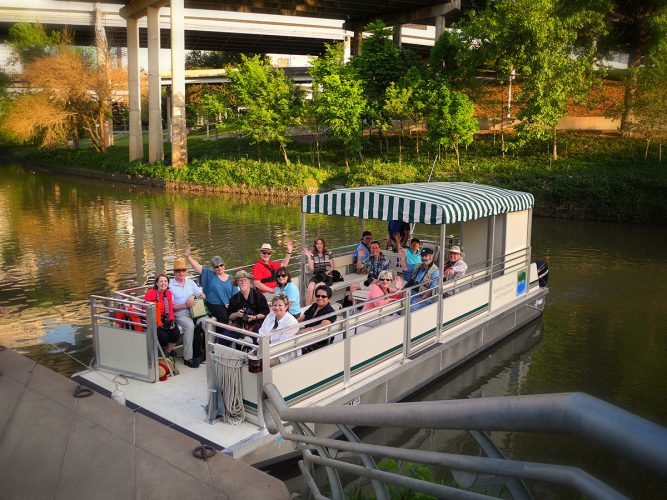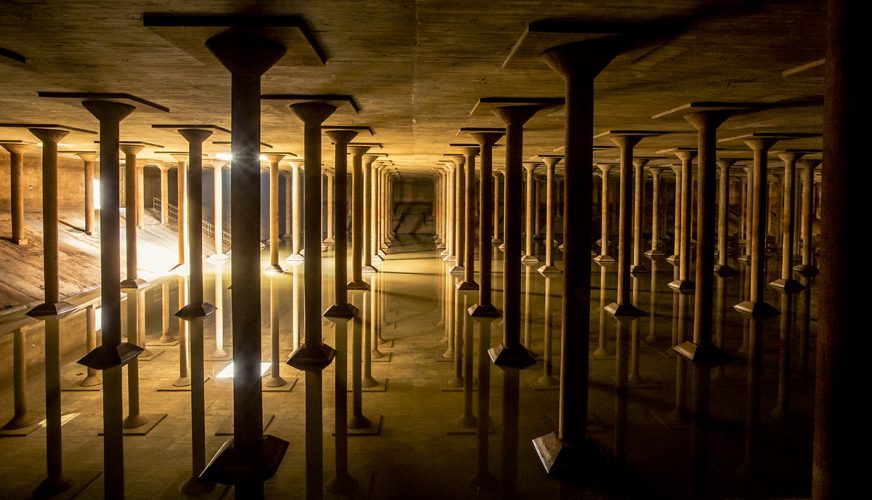How Houston is connecting two disinvested neighborhoods to green space and amenities
Buffalo Bayou, a slow-moving waterway that runs through the center of Houston, is widely considered the city’s most significant natural resource. Over the past decade, the Bayou’s sector west of downtown has experienced renewed vibrancy as a result of placemaking interventions that created the 160-acre Buffalo Bayou Park, which features trails, play areas, a dog park, pavilions, and gathering spaces for residents to build community. However, the neighborhoods along the waterway’s eastern sector have not seen the same level of investment. These historically disinvested, majority-Black and Latino or Hispanic neighborhoods—the Greater East End and Fifth Ward—have long been physically separated both from the Bayou and each other by large industrial sites, poor street linkages, and limited connections across the waterway.
